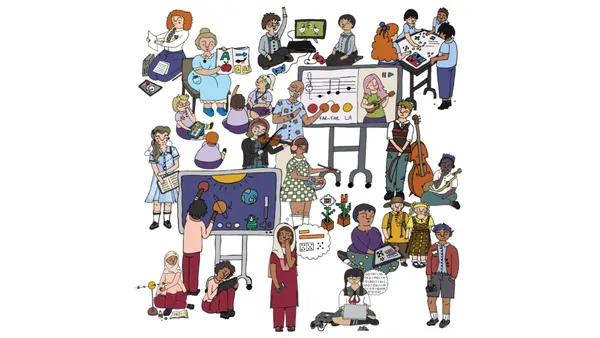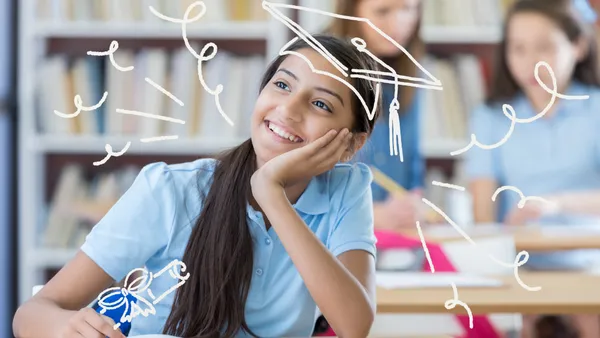Dive Brief:
- Districts looking to hire teachers who have the skills to work with an increasingly diverse student population might want to begin recruiting young people working in summer camps, after-school programs and other community organizations that serve black, Latino and other minority children, a new study published in the Journal of Teacher Education suggests.
- In a survey of almost 2,500 undergraduates and graduate students enrolled in a teacher preparation program, New York University researchers examined the future educators’ multicultural beliefs, looking specifically at whether race, ethnicity, education and past experience working with diverse children and youth affects whether a preservice teacher is more comfortable with and sensitive toward cultural diversity issues in the classroom. Master teachers also observed about 60% of the study participants while they were student teaching.
- Black and Latino preservice teachers reported more multicultural beliefs than their white counterparts, while Asian participants in the study were the least multiculturally aware, the researchers found. “It is possible that Asian American student teachers believe that multicultural education, like other discourses on race that make little mention of Asian Americans, does not include or embrace their identities,” Hua-Yu Sebastian Cherng, the lead author of the study and a professor of international education, said in a press release.
Dive Insight:
Research continues to point to how the black and Latino students are affected by attending schools in which the teacher workforce is predominantly white. A study released earlier this year, for example, showed that when low-income black students have at least one black teacher in the elementary grades, they are significantly more likely to graduate from high school. Other research shows that black teachers are more likely to refer black students for gifted and talented programs, and that when students of color have teachers of the same race, they perceive teachers to be more caring and are happier and more motivated in class.
Recruiting more teachers of color, however, can take years, which suggests that schools also need to provide professional development to current teachers on working with diverse populations and creating what Cherng referred to as "inclusive classroom environments."
Partnerships between schools and universities can also build future teachers’ multicultural awareness when they have opportunities to tutor or volunteer in public schools serving a diverse population. At the University of California, San Diego, for example, the Partners at Learning program places undergraduate students in schools to work as tutors and mentors with “underrepresented and underserved” students in PreK through 12th grade. Bringing diverse college students and other volunteers into classrooms can also expose students of color to role models who have similar cultural backgrounds even if their teacher is not of the same race.













